3-D molecular modelling
Background
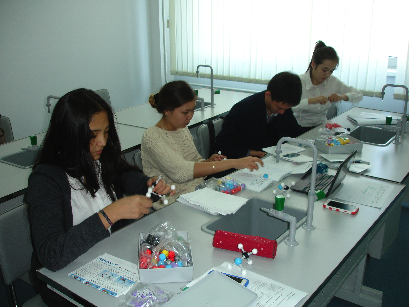
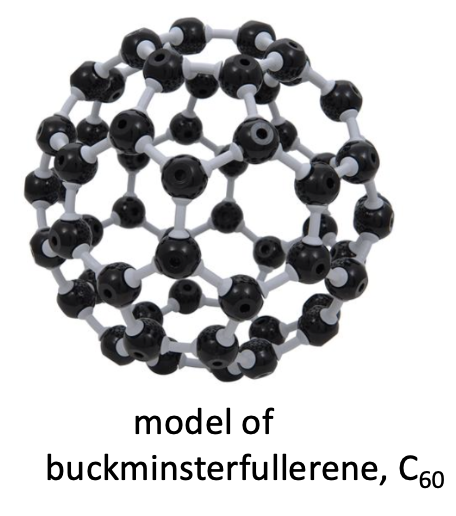
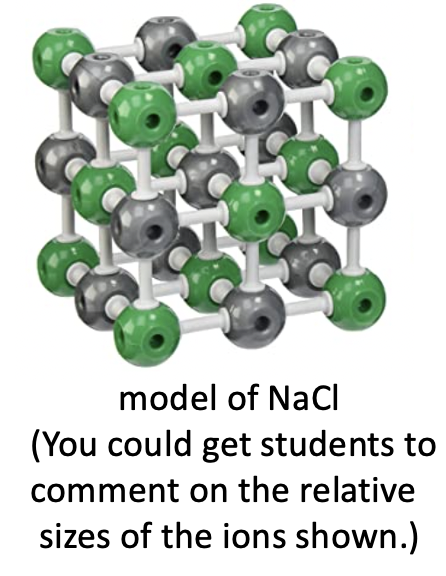
If you can, it is a good idea to have models of larger structures such as sodium chloride, diamond, graphite and buckminsterfullerene displayed permanently in your laboratory or classroom.
Some suggested exercises
Some particular exercises worth doing are:
1. Build models of methane, ethane and propane to see that there is completely free rotation about the C―C single bond.
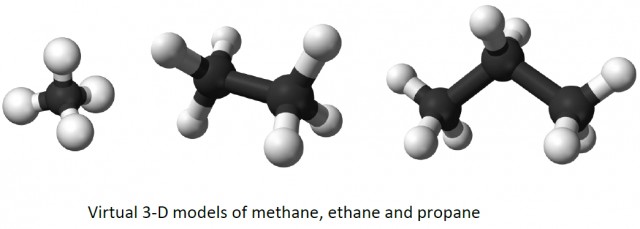
2. Build models of butane and 2-methylpropane to introduce the idea of structural isomers.
3. Build models of ethanol and ethoxyethane to show the importance of functional groups. This can then be extended to C4H10O to see if they can find the four possible alcohol structures and the three possible ethers.
4. Give different students one black ball and the same four different colours together with the connectors and get them to make a tetrahedron with the colours around the central black ball. Ask them to see whether they all produce the same molecule or whether some are mirror images of the others.
5. Build models to illustrate cis-trans and E/Z structures around a C=C double bond.
6. Make models of butan-1-ol and 2-methylpropan-1-ol to show that both are primary alcohols then also make models of butan-2-ol and 2-methylpropan-2-ol to show a secondary and tertiary alcohol and then also ask them to use the models to put the four isomers in order of increasing boiling point. They should also be able to see that butan-2-ol is the only one of the four isomers with a chiral carbon atom.
7. Ask them to come up with as many different ways they can think of that are commonly used by chemists to model a simple molecule such as propan-2-ol (see below for some possibilities).
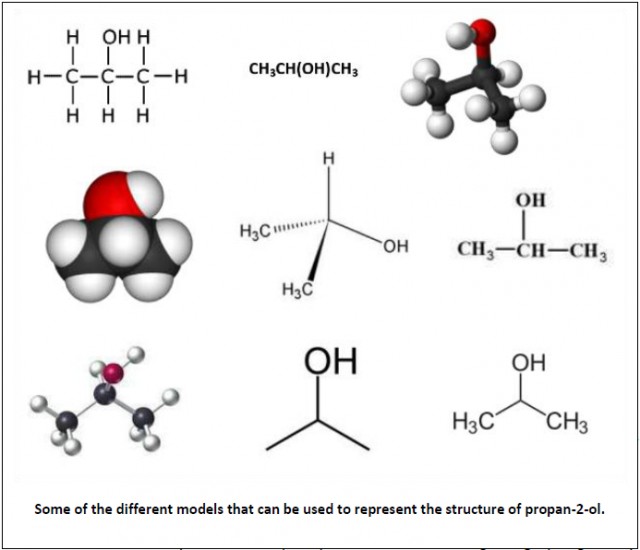
8. Finally, a nice exercise suggested by Adrian Thompson, a chemistry teacher at Ecole Active Bilingue Jeannine MIB Docs (2) Teamel in Paris. Place about six pre-assembled structures into numbered black bin liners. In small groups students in turn feel the structures (without looking) in order to come up with the condensed and full structural formulas. This helps students to mentally visualize molecules better.
Some other suggestions
It is probably best to search yourself to find apps that are compatible with the device(s) you use or are familiar with. The lists below contain suggestions but it is worth checking out these apps carefully as they can easily change or become outdated and some only work for phones or tablets and are not always both IOS and Android compatible.
Virtual 3-D modelling programmes for organic molecules
Suggestions include:
http://www.acdlabs.com/resources/freeware/ (Chemsketch free to download for personal use)
https://www.chemdoodle.com/ (free to download for 2-D and a small charge for 3-D)
https://chemaxon.com/products/chemical-structure-representation-toolkit
APPs for virtual 3-D modelling
Suggestions include:
Mol calc (simple and easy to use)
Molecules by Sunset Lake software: (for iphone and ipad)

 IB Docs (2) Team
IB Docs (2) Team